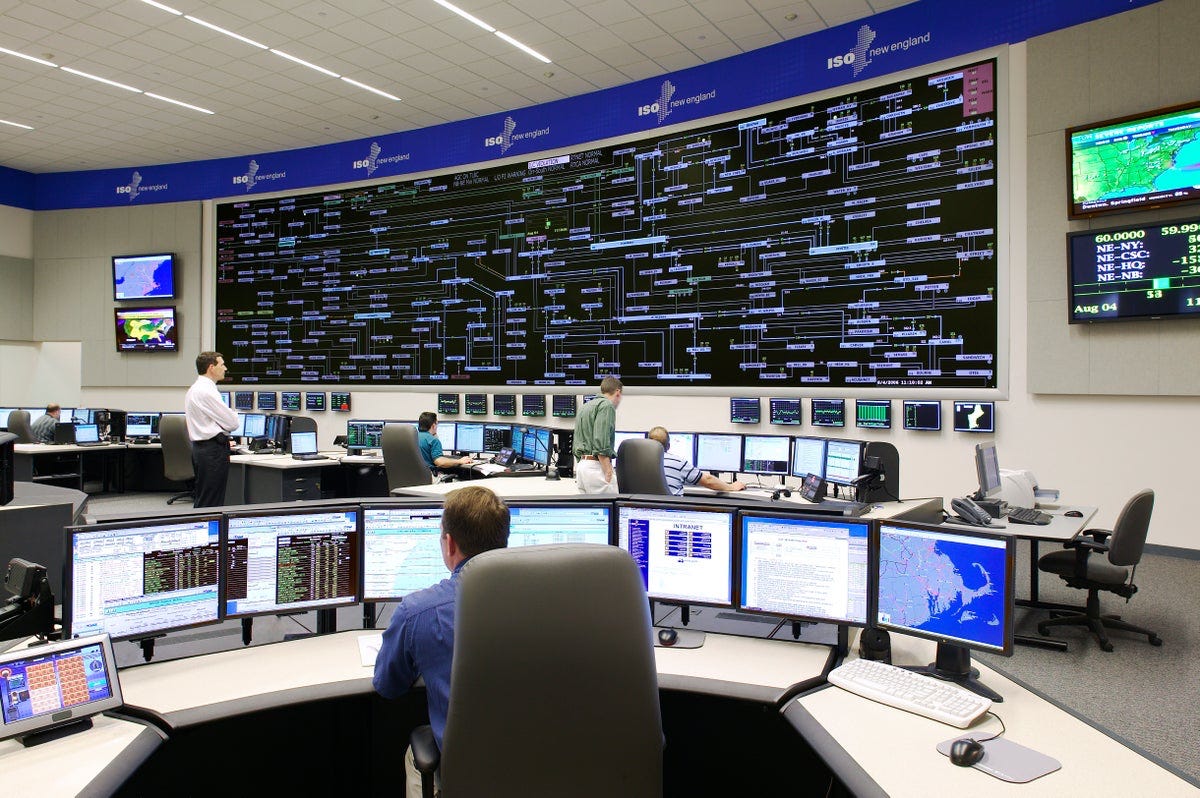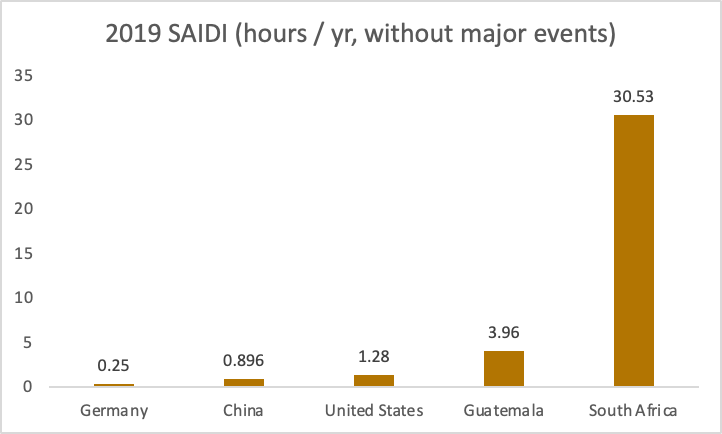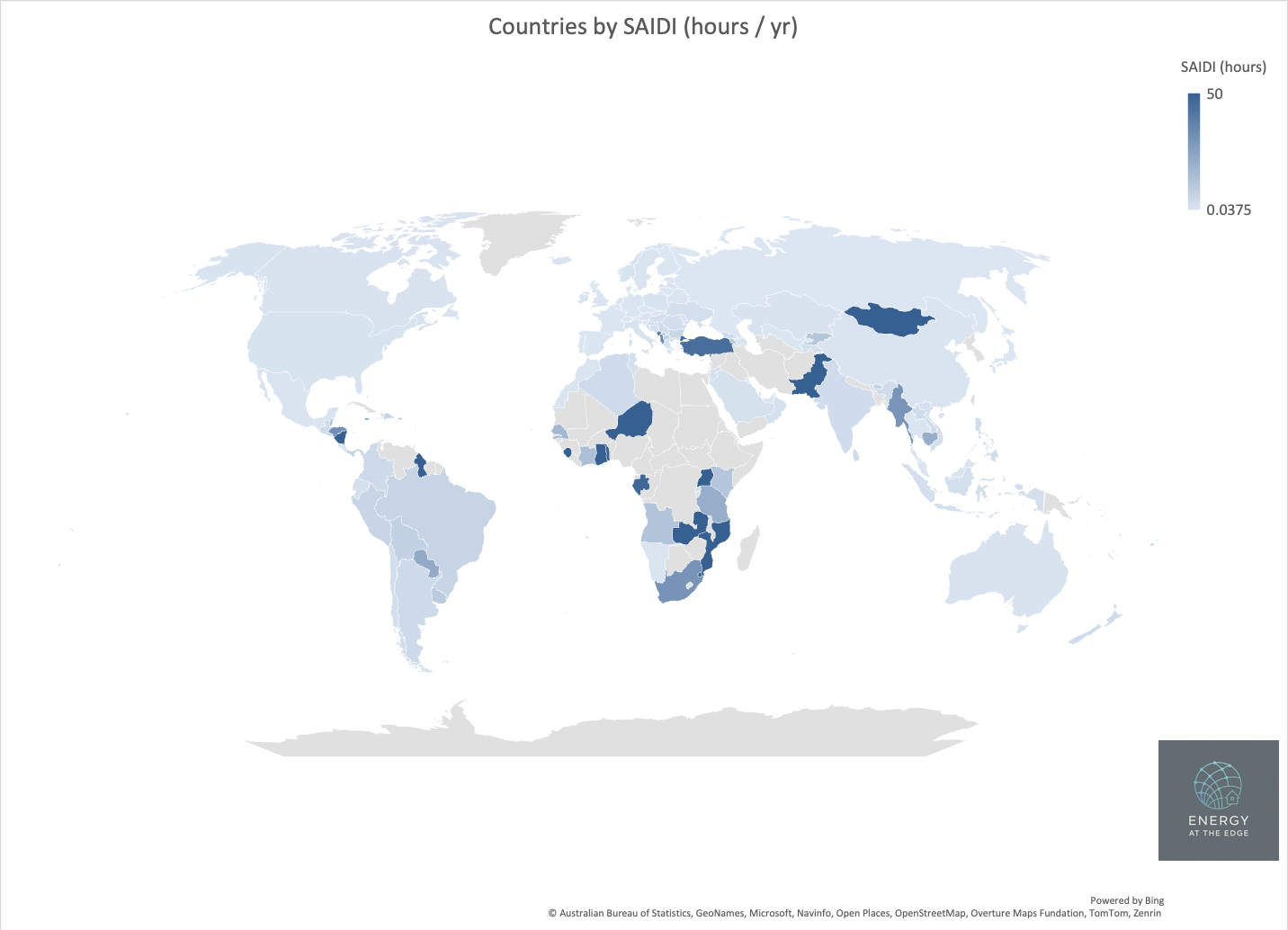The Unseen Rules of the Grid
The Physics, Technology, and Social Norms That Shaped, and Continue to Shape the US Electric Industry
Posted From: New York, New York, United States
Understanding Energy Series: Article 2
Before we get into the regularly scheduled post:
I’m bringing future posts to life with the help of your input. I’ve put together a quick survey (~6–8 minutes) to hear how you interact with energy. This will form the basis of the next article in the customer energy series.
👉 Take the survey here: https://forms.gle/RP6ewtcyphYy3D2E9
As soon as I get enough responses, I will write that article!
Topics covered:
Electricity is governance first by the laws of physics
Three principles:
Supply must equal Demand at all times
Utilities build supply to meet customer demand
Reliability, resilience, and affordability
Created by the convergence of science, business, and law: the US Utility
Part 1 of this series explored how electric utilities came to exist. Natural laws (i.e., science) govern the flow of electrons, while human decisions create market and legal structures. Taking together, these factors shape the US electric industry.
A deeper dive into the science, to understand its limits
Physical flow of electrons dictate larger operations
Although we cannot view them, electrons move.1
Electricity is the flow of electric charge. Metal wires have loosely bound electrons, allowing them to be "conductive," as the electrons can carry charges. As voltage is applied through this metal wire, an electric field forms within the metal wire itself. This electric field pushes electrons, creating a current. To sustain a continuous current, a closed circuit is required.2 Circuits have limits in terms of current, voltage, and power, depending on the materials and components used.
Another important factor is frequency, which affects how components like capacitors, inductors, and transformers behave; many devices are designed to operate efficiently only at specific frequencies. For example, in an alternating current (AC) system, frequency refers to the number of cycles per second during which the current changes direction. US electronics have a frequency of 60 Hz, meaning the current changes direction 120 times per second! 60 Hz means 60 cycles per second, and in each cycle the current changes twice.
"The World's Largest Machine"
Any guesses to what it is?
.
..
…
..
.
The Power Grid!
Nonetheless, the entire power grid must abide by the same laws of physics as the single wire example above.3
Let’s extend the example of frequency. Frequency must remain close to 60 Hz.4 If it drifts too far, equipment can be harmed.5 Frequency changes if there is an imbalance between electricity being produced (i.e., supply) and consumed (i.e., demand). If supply exceeds demand, power generation devices speed up, increasing the frequency of the electrical current produced; the reverse is true if demand is higher.6
Before the advent of digital technologies, the analog read of frequency at various points within an electric system would be the primary indicator to grid operators on whether to increase or decrease electricity production within their power plants.
When I was in a utility control room in Alaska, there was a visible sign showing the frequency every second. This number hardly changed, which meant the grid was operating at an equilibrium.

Thus, the first tenet of the electricity grid is as follows:
Supply must always EXACTLY match demand. (i.e., power generated must equal power consumed)
If not, frequency drops and the system can fail.
In fact, this is what occurred in Spain and Portugal earlier this year: Frequency fell dramatically within minutes and the entire Iberian Peninsula lost power for at least 10 hours (source).7
At any point Supply must equal Demand, so what can a utility do?
The utility (i.e., grid operator) has two options: either control supply or control demand. That's it. The former option is what the electric grid's foundation rests upon. Think back to 50 and 100 years ago to the 1970s and 1920s. Before digital technologies, the grid operator did not have real-time insights to the demand of electricity by its customers.8 But, it did know its supply: where power was produced, how much was being produced, and what power plants could be turned on and off. Thus, the power grid formed around supply being the controlling function, with demand as the variable to respond to.9
Rewriting the equation above,
Demand = Customer usage (which is uncontrollable)Supply = Utility Actions (controllable); therefore…Equation below
Utilities then, must build supply to match demand. Demand by US customers could not be restricted. (And because of this, social norms developed where demand SHOULD not be restricted, either). We arrive at the second principle of the grid: utilities must build supply to match peak demand. Peak demand refers to the time when power demand from customers is at its highest.
The second principle builds off the first principle, albeit is rooted in technological constraints, as opposed to physics-based. If utilities had the infrastructure to understand, measure, and manage customer usage, this principle would be weakened. Before the 21st century’s macroforces, this was close to impossible. Our current electric grid was built with this second principle in mind.
With our current system and the social that developed around it (i.e., restrictions about altering demand), the cost to build out this system for 100% availability for energy 24/7 (or, as close to possible with minimal outages) is immense.10
This level of reliability is not inevitable: it’s a choice. The United States (like most developed countries) expect the lights to turn on when we flip the switch. We expect a reliability close to “four 9s,” parlance for 99.99% uptime of a system.11
Countries across the globe have different approaches to uptime
I've discussed this expectation of reliability with a friend of mine who lives in South Africa about their electric system; they constantly have "brownouts" and even blackouts!12 It is not a rare occurrence to lose power. During these brownouts, diesel-based generators come online behind the meter for customers who have them; the ability to use power is dependent on the customer’s financial resources to install and operate their own generator. Rather than creating higher grid costs for all customers, the system allows the customer to take on themselves the cost associated with higher uptime of power.13
Uptime of electric grids around the world

Does this principle exist elsewhere or is the electric industry really that special?
Another industry that faces a similar situation is emergency care. It is almost impossible for hospitals to control the demand (i.e., # of new patients), yet it can control the supply of care (i.e., the capacity of its emergency services). During COVID when the demand far outpaced supply, we were told to "Flatten the Curve" -- reduce the peak demand we would make on emergency services. In the case of our 21st century grid, this "Flatten the curve” mantra also rings true: if peak demand is lowered (flattened), then the cost to serve customers would be far less.
Steady Service, Grounded Grids, Controlled Costs
The 3rd principle weaves in the human elements with the physics and technology-based first and second principles. The grid must deliver power in a reliable, resilient, and affordable manner. These values are what underpins the business and legal frameworks surrounding the US electric (and gas) industry.14
As learned in my debate team competitions from high school, definitions are important. As such, the terms are defined as follows:
Reliability: the likelihood of a system working as expected without failure.
Example: How often power is delivered without outages.
Resilience: the ability of the system to adapt to and recover from unexpected events or disruptions.
Example: How quickly power is restored after a storm or other outage.
Affordability: the system's cost is just and reasonable (Federal Power Act of 1920)
Example: Balancing increasing costs with maintaining reliability and resilience.
Our electric grid has been shaped by a focus on all three values, often balancing one against the other. Principle 2 showcases countries have different standards for reliability and resiliency. Likewise, countries have different standards for affordability. Taking these values together, utilities and their regulators must balance how much to invest in the grid to ensure reliability and resiliency are met, without costing customers too much. If costs increase beyond what can be paid, lower-income customers have an increased chance of having their power shutoff and businesses are increasingly likely to move.
Case study: Balancing reliability, resilience, and affordability as a large industrial manufacturer - Alcoa
In the early 1900s, aluminum production was extremely energy-intensive, requiring large amounts of electricity for electrolytic smelting. The Aluminum Company of America (Alcoa), needed cheap, reliable electricity to grow its operations. So, it invested in a production facility where electricity would be reliable, resilient, and affordable: Niagara Falls, NY in 1895 (source). It expanded operations in the St. Lawrence River further north in 1902 to gain greater access to cheap electricity.15 Furthermore, the company even founded the town of Alcoa, Tennessee in search for electricity that was reliable, resilient, and affordable (source)! This is a clear cut example of energy-based economic development, where regions with consistent, low cost electricity attracted large electricity users.
Important note on “consistent electricity”
In the early 1900s that meant the area had access to hydropower.
Nowadays, it can mean an area has access to 1) existing nuclear, 2) existing transmission, or 3) potential development of large scale solar + storage.
The three principles of the US electric grid
⚡ Supply Must Always Equal Demand
🏗️ Utilities Must Build Supply to Meet Peak Demand
🔌 The Grid Must Be Reliable, Resilient, and Affordable
These principles emerged from the interplay between immutable physical laws, historical technological limits, and ingrained human expectations. They drove the formation and current operation of the grid. But, what happens now when business and technology are evolving faster than physics and law?
Next in the series: How electricity is paid for in the US, with a special focus on affordability
This is post 9 on Energy at the Edge.
Views expressed in this article are those of the author and do not necessarily represent the views of their place of employment.
AI was not used for writing.
My high school level knowledge of science has its limits, but I did learn that electrons are smaller than wavelengths of light AND when observed, their behavior is actually affected! Thus, scientists study electrons indirectly through the effect they have on other objects.
Otherwise, the flow of electrons would be abruptly upended by a mismatch between mismatched voltage within one conductor.
The Hz is usually held within a range of ±0.5%, so, 59.7Hz to 60.3Hz.
Equipment used to both generate and consume electricity.
This warrants a deeper dive into electricity as a commodity. (future post…)
The exact cause of the frequency reduction is not yet published.
With AMI today, utilities get at least 15 minute data from their customers on their current electricity usage.
The latter is "new" for utilities and forms the reason behind the blog itself - how can utilities influence demand, a whole new side of the equation that they have only scratched the surface in exploring.
If any readers come across statistics on this, please send them along! I had one but can not seem to find it…
Common phrasing used in Service-Level Agreements with IT-based services.
A brownout is a reduction in voltage, while a blackout is a complete loss of power.
Interestingly, I'm viewing a similar phenomenon occurring in the US now, as new data centers (built to serve AI training and inferencing) come online in numerous states: new rate structures are being filed so the customer adding the marginal power use is paying for the expanded grid capacity fairly directly, rather than subsidizing across the customer class. (to explore further in a later post)





